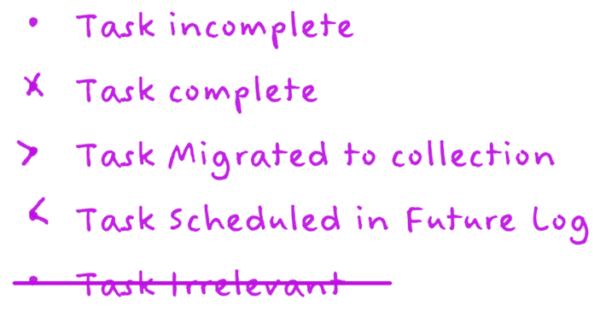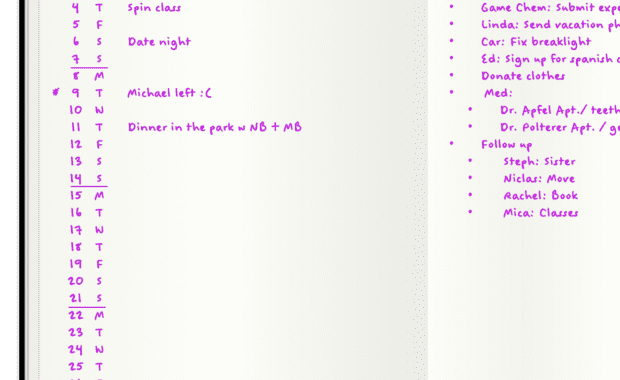Do you want to form a bullet journal practice? If you’re anything like me, you probably don’t know where to start or what bullet journaling even is.
This post is an introduction to bullet journaling. It contains all the information you need as a complete beginner.
Bullet Journaling is a habit that I’ve always wanted to develop. It was only recently that I began to solidify my bullet journal practice. After trying bullet journaling for a week, I found the many uses and benefits of doing it daily.
What Is Bullet Journaling?
At its core, bullet journaling is a fast and simple method to help you organise your life. It is the ‘Analog Method for the Digital Age’.
Since its creation, the bullet journal system has evolved. People have adapted it to their own needs. In doing so, new methods and approaches have formed. But, the essence usually stays the same:
The Bullet Journal System
The bullet journal system is a faster (and often neater) method of note-taking and planning. If you want to learn in more detail, visit the official site. Here are the basics, though:
- Most bullet journals operate using ‘rapid logging’. Through using the following bullets, planning and note-taking becomes easier and faster.
- Bullets are ways of categorising information:
- Dots represent tasks
- Dashes represent notes
- Open circles represent events
Benefits Of Bullet Journaling
From my personal experience, here are a few benefits that I’ve noticed:
- Faster and easier than traditional journaling
- Greater clarity and direction with work
- Having everything in one place
- Being more organised
- Regular reminders to work and strive towards goals
- It’s personal and customised; an expression of yourself.
Bullet Journaling – Tasks
When I began bullet journaling, my reasoning was for productivity. The system for organising tasks proved useful for this purpose. I like the simplicity and flexibility of the system. It didn’t stray too far from traditional To-Do lists, yet still felt fresh.

Developing Your Bullet Journal Further
Part of the beauty of bullet journaling is the ability to customise. If you’ve ever seen images or videos of people’s bullet journals, you’ll have noticed a lot going on. Stylish or minimalist designs for all sorts of functions. My approach was very minimal; I didn’t care so much about how fancy it looked. It’s there to serve a purpose.
You may want your bullet journal to look incredible, with pretty designs, stickers, and colours. If so, great! You do you. Your bullet journal design should be unique. The power comes from combining the bullet journal system with your own designs. Your designs are for your specific purpose and serve you best.
Designing For Productivity
For me, that meant adapting the system for productivity. Transferring my daily To-Do list tasks to this system. I altered my longer ‘break it down’ To-Do list approach into a 3x Most Important Task (MIT) focused list, inside the bullet journal. This allowed me to fit each day’s tasks on a weekly spread. That’s the base for me. From there, I decided I’d experiment with different spread designs over the following weeks.
The feature that made the most sense to me was weekly goals. This would help give me direction throughout the week and act as a method of measuring progress.
As a result, a section for weekly goals became a recurring feature. I wanted a new spread for each week, where my daily tasks and weekly goals existed.
Another feature was writing rough outlines for each day’s work. I’d list the general things I’d want to achieve each day, meaning I could start each day with clarity and direction.
Bullet Journaling For Organisation
As I’ve continued to bullet journal, I’ve realised how useful it is for organisation. Having all relevant information in one place helps you to stay organised and find what you’re looking for. There are pre-designed systems you can follow to keep your life and journal more organised.
Although I use bullet journaling for productivity, you may prefer it for organisation. One bullet journal organisation system that I use, which also helps with productivity, is the Monthly log. This is a two-page spread used for organising and planning your months.

The second page is what I want to focus on. Here, it contains monthly tasks using the system from earlier. I adapted this to include goals as well – square boxes to strive to complete by the end of the month.
This meant I always had a clear idea of what I was doing that month. I knew what I was aiming for and could break those goals or tasks down into weekly and daily tasks.
Final Thoughts
I quickly fell in love with bullet journaling. It doesn’t have to be pretty. I prefer a more minimalist style, since it’s faster and more effective. Originally, this post was a reflection on bullet journaling for a week. I figured a proper introduction would make more sense and have more appeal. If you wanted to hear my original thoughts, without the knowledge I have now, check out this video.
Also, if you’re wondering which journal I use, I got this set of 2 dotted journals on Amazon for relatively cheap. They are high quality, in A5 size, and have a pocket at the back. Strong recommendation.
Thanks for reading.
If you enjoyed this post or found it useful, share the site with your friends. We have loads of other useful posts if you want to learn more, so have a browse. Cheers!